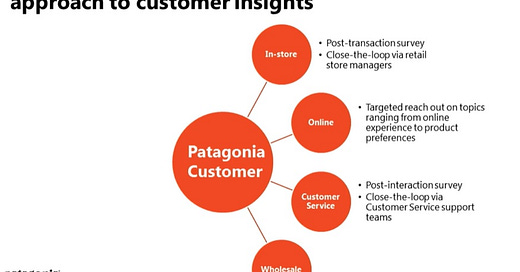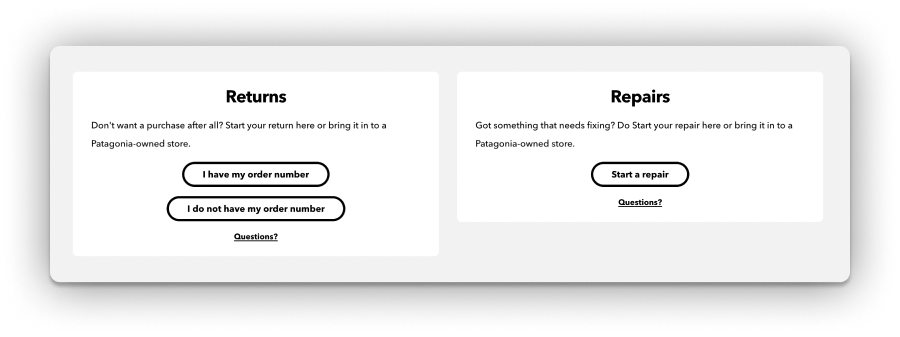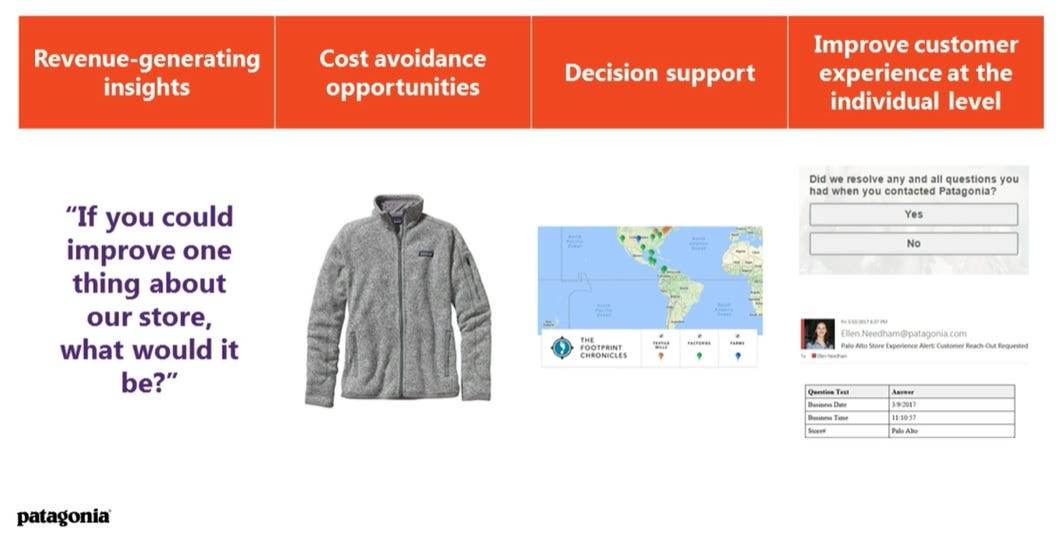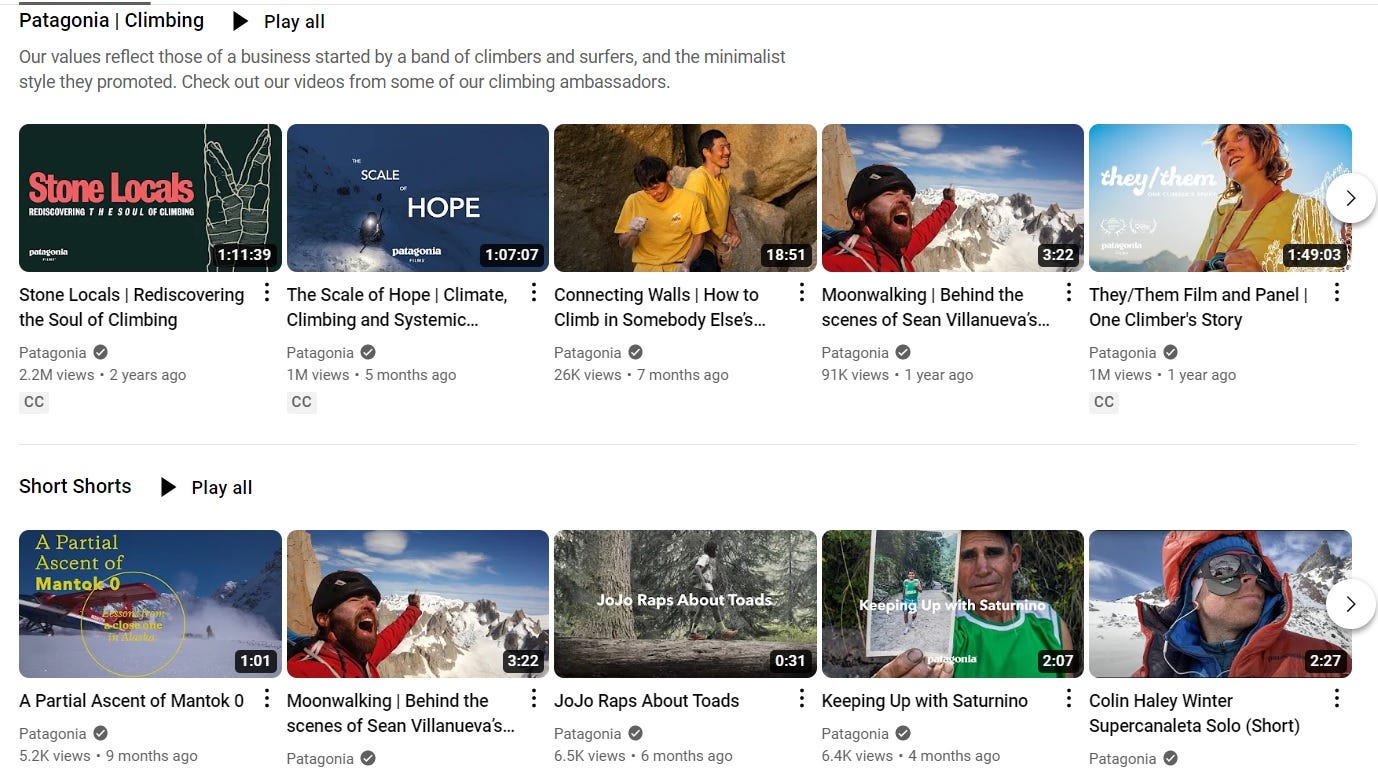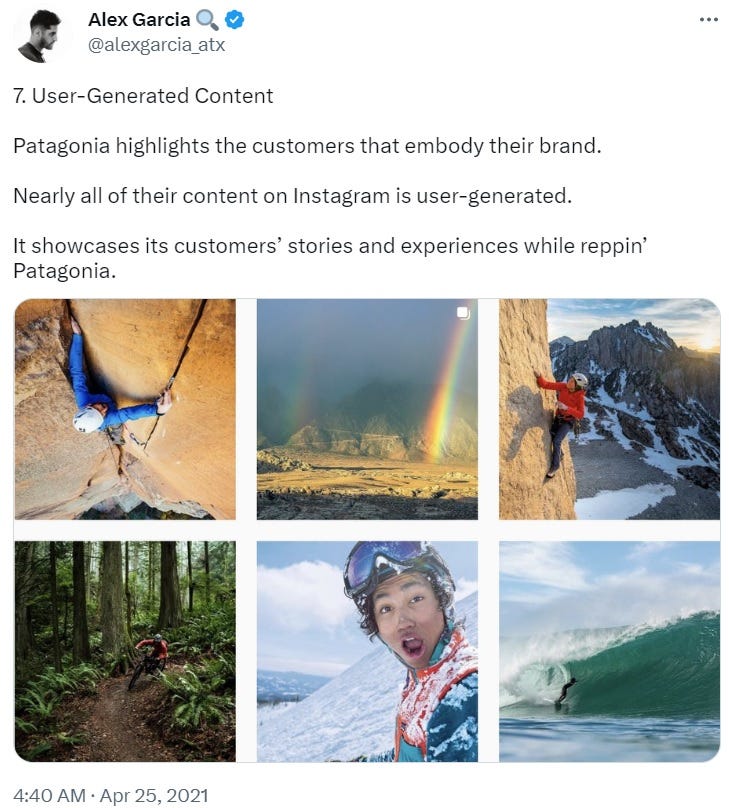Delivering Solid CX – The Patagonia Way
Patagonia as a brand has been top of mind for me for a long time – possibly since the first global trips in the 2000s. One mostly saw their winter jackets and bags everywhere in ‘cold & outdoor’ tourist places (along with the other iconic brand Northface). The trigger for doing a focused post on them now came after recently reading a book club summary of founder Yvon Chouinard’s popular compilation ‘Let My People Go Surfing’.
This post does not really cover the book summary, but instead focuses on some of their best practices on delivering solid customer experiences (CX) – with anecdotes that even go beyond the book summary. Hoping that it will be a refreshing read…
Patagonia – The Brand and The Business
Patagonia is an American retailer that specializes in outdoor clothing and equipment. In addition to clothing, they also sell outdoor products like sleeping bags, backpacks, camping food, and so much more. Over the decades, Patagonia has developed clear business philosophies – one for each major activity (function) in the Company:
a) Product Design Philosophy: Every design at Patagonia begins with a functional need. The best products are multifunctional. Buy less, buy better; make fewer styles, design better. The overall durability of a product is only as good as its weakest element. The ultimate goal is a product whose parts wear out only after a long life. There will always be a need to repair, but good design is as little design as possible. Function comes first at Patagonia
b) Production Philosophy: The challenge for Patagonia is to re-create on an industrial scale with a devotion to quality, with an ability to keep in mind all their criteria and learn by doing. It is a faster process to involve the Designer with the Producer, where a concurrent approach brings all participants together. The drive for quality in production must go beyond the products themselves. Durability and low environmental impact make that list
c) Distribution Philosophy: Patagonia sells their products at a wholesale level, through their own retail stores, mail order and e-commerce. Patagonia requires on-time product delivery and must deliver its products on time. ‘On time’ means when the customer wants to receive it. It is also far more profitable to turn inventory more quickly.
d) Marketing Philosophy: Their branding efforts are simple – To tell people who we are. Patagonia’s image arises directly from their values and is a direct reflection who they are and what they believe. Patagonia’s image is a human voice; the joy of people who love the world, being passionate about their beliefs. To influence the future, use text to argue ideas as well as sell products. Branding is telling people who they are while promotion is selling people on their products
e) Financial Philosophy: Patagonia’s mission statement says nothing about making a profit, and the founding family considers their bottom line as the amount of good that the business has accomplished. Making a profit is not the goal at Patagonia, but striving to balance the funding with the desire to continue in business. Faced with a serious business decision, the answer almost always is to increase quality. They make a decision to do the right thing for the planet while being good for the business
f) Human Resource Philosophy: Working satisfies the creative urge to do something both useful and pleasurable. Work also satisfied the need to make money. The interest of the customer was equal to that of the employee. The first principle of hiring is for Patagonia employees to be true Patagonia customers. Patagonia employees have diverse beliefs, and while not everyone wants to change the world, they want the company to feel like home to employees who live rich and rounded lives. Their idea is “our people go surfing when there are waves”
g) Management Philosophy: They don’t hire the kind of people one can order around. They want the kind of employees who will question the wisdom of a bad decision. How one can get these highly individualistic people to align and work for a common cause is the art of management at Patagonia. No one person has all the answers and each has a part of the solution. A familial company like theirs runs on trust. Be adaptive and resilient; constantly embracing new ideas and methods of operation
h) Environmental Philosophy: Action is the basis for the environmental philosophy at Patagonia. Their basic philosophy is “to lead an examined life, cleaning up our own act, do our penance, support civil democracy, do good and influence other companies”
How Patagonia Delivers Solid CX
1) Voice of the Customer Program
Patagonia’s Voice of the Customer Program aims to facilitate conversations with customers in which they gather information, transform it into insights, and then drive actions that ultimately improve customer experience and loyalty
VOC revenue comes from a loyal & engaged customer base having a friction-less and emotionally-connected experiences with the Patagonia Brand
2) The Patagonia Ironclad Guarantee
Patagonia guarantees everything they make. Their Ironclad Guarantee means that if a consumer is not satisfied with the product when they receive it, they can return it to the store for replacement, repair, or refund. They promise their customers of this ability at any time and are hassle-free. Patagonia trusts its own products and wants consumers to trust them as well. Consumers can shop with confidence knowing that the product will be what they want or they can send it right back for a full refund
3) Friendly Returns & Repairs
Patagonia makes it easy and fair to return products. Its return policies take quality seriously. In their own words, they state: At Patagonia, our business is building the best product. If something isn't working for you, we want to help
The company makes it easy to exchange products for any reason, whether it's because it didn't fit right or you just want to try something different. They also make it easy to return products in a Patagonia-owned store or online. Knowing you can return a product easily and fairly makes it easy to depend on a company
4) DIY Repair & Care Guides
Patagonia provides DIY Repair & Care Guides for their products to keep gear going for a long time. They want to keep their products out of landfills, even if it means you keep your products longer. They are not looking to sell you products that break down quickly so they can make another sale
Patagonia offers videos and instructions on things like:
How to fix a zipper slider
How to patch insulation
How to fix your buckle
How to install an iron-on patch
And so on…
These guides show how much Patagonia cares about consumer experience and the products they make
5) Seamless Omnichannel Experiences for the Individual
As Patagonia grew into a global organization over the years, the company wants to ensure that the company could provide customers with the same experience and the same level of support regardless of their chosen purchase channel; online, physical retailer, or direct – focused on the Individual Customer
They have created an integrated Mobile App that assigns a barcode to each customer, instantly bringing up order history, customer info, and customer ID at the POS. Now, customers can go to Patagonia’s retail locations and easily complete purchases and returns by quickly and safely sharing customer info, facilitating a more convenient and personalized customer experience
The integration team has automated internal transactions and facilitates customer communications in a scalable and reliable way. The time between order processing and a customer receiving a confirmation email is down to less than 5 minutes. That’s a significant improvement over their competitors’ average of 45 minutes
6) Regular Consumer and Community Engagement
Patagonia constantly engages with its audience through campaigns, where they not only focus on advertising its products but rather provide consumers with content and products that will benefit their lives and interests. They educate, motivate and assist people to recycle clothing and to have a more conscious lifestyle
Patagonia extends their customer experience interaction by providing their customer with informational materials; like newsletters, events, social media, public engagement and blogs. It demonstrates its sustainable supply chain activities, including how they made its Fair Trade Certified garments, in the effort to impact in a positive way their factory workers, as well as to educate their customer where the materials come from
Beginning as a series of pop-up events, Patagonia’s “Worn Wear” campaign has expanded to include a short film, a mobile tour, and online website. The 30-minute film features stories from eight loyal customers including a surfer, a long-distance hiker, a cyclist, a young family, an organic farmer, a wildlife photographer, a backcountry skier, and a climber. Each of the individuals interviewed recalled some of their favorite memories while wearing their Patagonia gear, some of the products they have owned for up to 33 years. Rather than encouraging customers to buy new clothing, this video demonstrates the importance of buying well-made clothes that last a lifetime
Patagonia’s YouTube channel videos are related to outdoor adventures such as snowboarding, skiing, surfing, climbing and campaign like Worn Wear. It makes sure their videos tell stories rather than just sell products, the brand story is essentially told through what they focus their cameras around and that excitement is influenced any video or production approach. The brand also post videos explaining the process of their garment via outdoor activities
Check the channel here at: https://www.youtube.com/c/patagonia
7) User Generated Content (UGC)
Patagonia enlists user-generated content (UGC) through images, videos, landscapes, stories, to promote and gain the customer’s mindspace. Rather than advertising its garments, the brand uses campaigns to educate their audience by sharing environmental and social issues, encouraging buyers to lower their carbon footprint and create awareness of consumerism, by continuously linking back to its core values and mission
In Conclusion
Patagonia believes that a Brand must create Image and Impact Together. Creating an impact is the driving force behind brands these days. Brands with a purpose that do what they promise. A brand exists because of consumers and the community. Creating Impact is what Brands make memorable, believable, and thus popular
References and Sources
1) The (Ogilvy) Global Reading Club summary of ‘Let My People Go Surfing’ by Yvon Chouinard
2) Why Patagonia is a Trusted Brand: https://www.enzuzo.com/blog/why-patagonia-is-one-of-the-most-trusted-brands-of-all-time
3) Patagonia Omnichannel Experiences: https://www.microsoft.com/en-us/industry/microsoft-in-business/customer-experience/2018/02/22/how-patagonia-transformed-the-customer-experience-in-the-cloud/
4) Paper on Patagonia Triple Bottom Line: https://arc.cct.ie/cgi/viewcontent.cgi?article=1013&context=business
5) Alex Garcia Twitter for Patagonia User Generated Content:

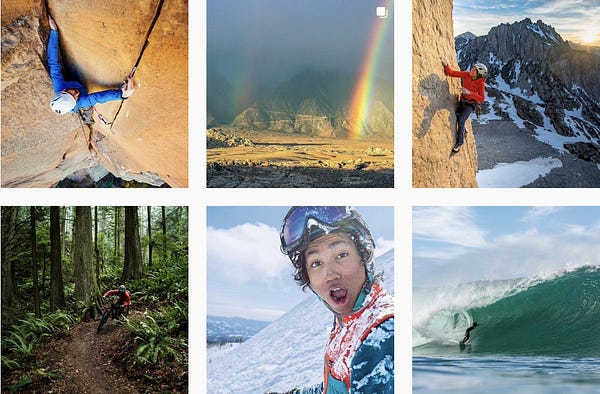
6) Worn Wear Campaign: https://digitalcommons.calpoly.edu/cgi/viewcontent.cgi?article=1078&context=rptasp
7) Voice of Customer Program:

